The day Mississauga and its iconic matriarch made headlines across the world
The list of cities suffering massive disasters is long, and includes places like Pompeii, now frozen in time after Mount Vesuvius blew its stack in A.D. 79.
There’s also another list of cities lucky enough to avoid death and destruction.
Put Mississauga near the top of that one.
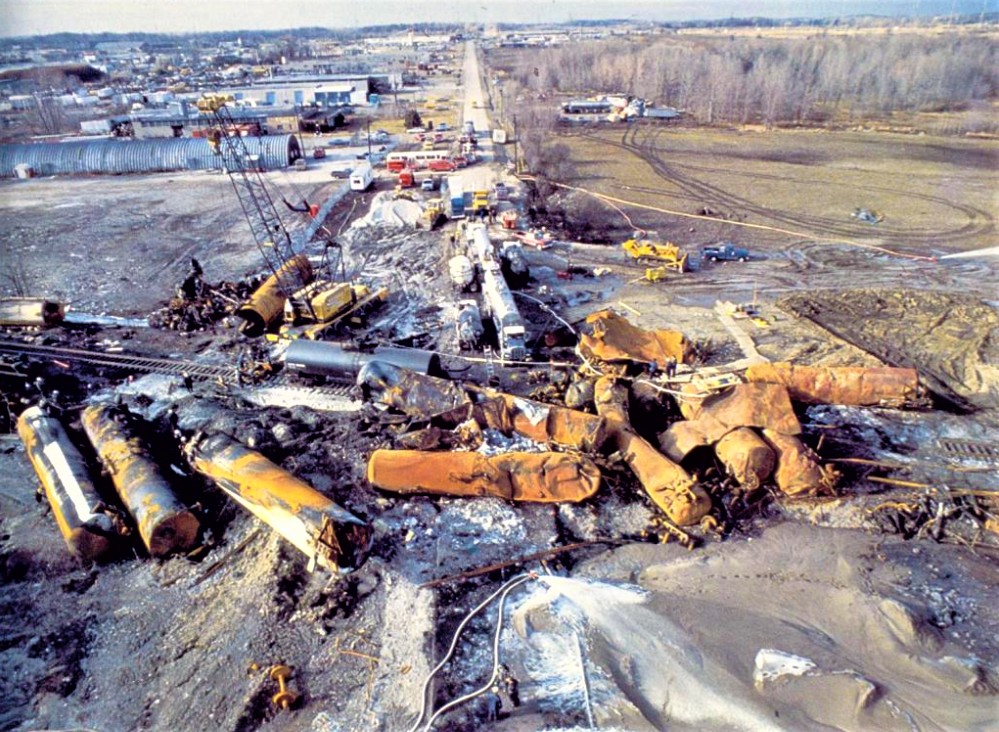
On November 10, 1979, a 106-car CP Rail freight train carrying a deadly payload of explosive materials, and chemicals including toluene, propane, caustic soda, and deadly chlorine, jumped the tracks near Mavis Road, and immediately ignited into a giant fireball lighting up the night sky. It led to the massive exile of some quarter-million residents, the greatest post-war movement of people since a decade earlier, when organizers folded tens of thousands onto Woodstock.
On November 10, 2019, 40 years to the day after modern-day Mississauga was stripped clean of its citizenry and emergency services and all levels of government tried to figure out how to keep everyone safe and secure, the city will officially mark the anniversary with a special day of … um, celebration?
Celebrating disaster avoidance is a tricky business, but that’s what Canada’s sixth largest city will do.
To commemorate this moment in time, two exhibitions are being presented in partnership with Heritage Mississauga and the Museums of Mississauga. They are now available at the Bradley Museum and The Grange until November 15. But this Sunday at The Grange, located at 1921 Dundas St. W., from 2 - 4 p.m., a public gathering will feature a special video presentation that features interviews with some of the key players and survivors. But the highlight will be a speech by the 98-year-old suburban icon, Hazel McCallion, who made her name and fame during the Miracle, and for the next 35 years, ruled as mayor of what grew from a patchwork of farms and villages into Canada’s sixth largest city.
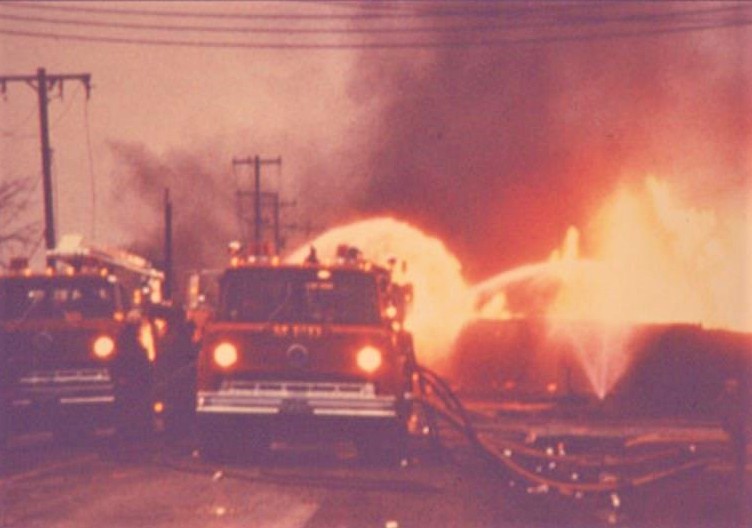
Yes, sometimes fireballs come in human form. Despite badly twisting her ankle that week (the only major medical casualty), she displayed the energy of a Navy-Seal. Her defiance of political convention was unprecedented. She vowed that Mississauga taxpayers would not pay one cent for the clean-up or displacement of citizens, then later drove through legislation curtailing the transportation of dangerous chemicals through built-up urban centres.
Remember the old adage, “cometh the hour, cometh the man?”
In November of 1979, it was updated to “cometh the woman.”
At an age (59) when many politicos are contemplating hip surgery, or buying a retirement home in the Muskokas, McCallion’s career and national influence was ever-expanding, like a cosmos bursting.
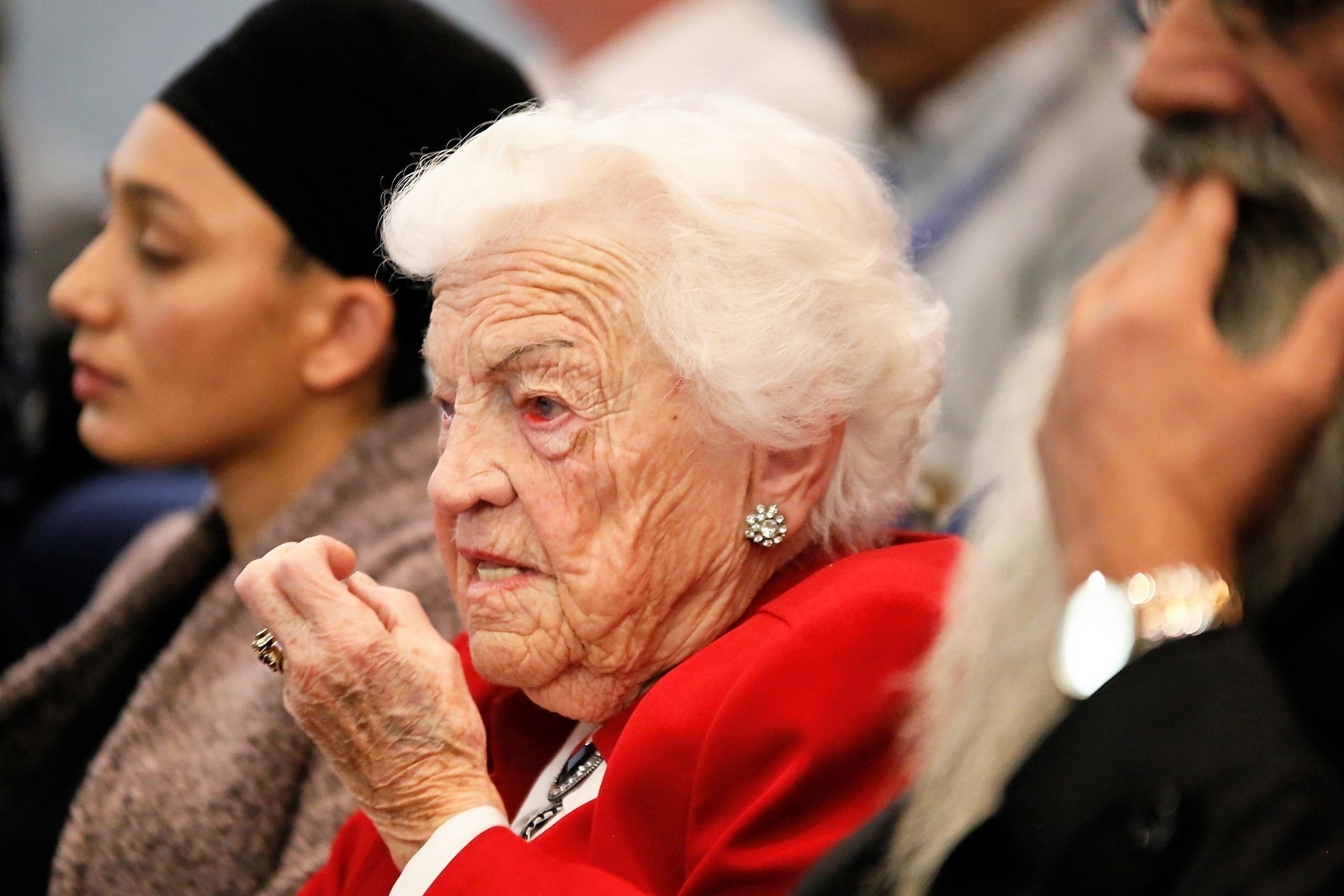
She had substance and style, and that much harder to explain attribute: the leadership gene.
This potential disaster, the response, the exodus, and McCallion’s leadership skills, were all crystallizing moments in the history of this city.
Now, exactly two generations later, all those events will (temporarily at least) come back into sharp focus.
At council on Wednesday afternoon, clips from a new video produced to celebrate (there’s that word again) events of 40 years ago, were unveiled inside city hall's legislative chamber. The video includes 52 interviews with some of the citizens and politicians and first responders involved and will eventually find its way to YouTube for all to see.
This gave the current crop of local politicians, including McCallion’s successor Bonnie Crombie, a chance to comment on how the Mississauga Miracle impacted on them and the city they now represent.
Ward 5 councillor Carolyn Parrish remembers the time, date, and unusual place where she was when this powerful narrative began to unfold. She was in the bathtub at her home near the Queensway when “the sky lit up.” It was so powerful, she thought a major city like New York must have blown up. She remembers gathering up her cocker spaniels, a budgie and like most residents, had to find a place where her displaced family could stay. They settled into her mother-in-law’s. The surreal scenes on TV of Mississauga and its empty streets were striking, like a replay of the 50s sci-fi film, The Day the Earth Stood Still.
Ward 11 councillor George Carlson was just a young boy living in Streetsville when, like a scene from another iconic movie, Stand By Me, he and his friends headed down the train tracks to get close to the site of the derailment. The 10-year-olds were met by a stern Peel Police officer who told them to retrace their steps home.
Pat Saito, Ward 9 councillor, was just having her second child and remembers clearly the evacuation. She noted that in 1995, when she was a councillor and took a course in disaster training for local politicians in Arnprior, the Mississauga Miracle was part of the curriculum, especially a case-study on the response from front-line providers.
Ward 7 councillor Matt Mahoney might have the funniest remembrance. He recalls how his over-exuberant father Steve, a first-year councillor at the time, channeling his best Alexander Haig (the secretary of state who famously offered up this faux pas, “I’m in control here,” when his boss, president Ronald Reagan was shot in an assassination attempt in 1981), travelled down to the disaster site after the derailment. He quickly introduced himself to the first responders and declared that he was “going to take over.” The younger Mahoney laughed when recalling how his father’s declaration got a tepid, Steve-who? response from those on the scene. Soon, the mighty McCallion was in charge, and Mahoney (and all others) faded into the background.
Crombie remembers playing cards in the basement with friends and quickly decided that her plan to go down and see the burning site wasn’t a good idea.
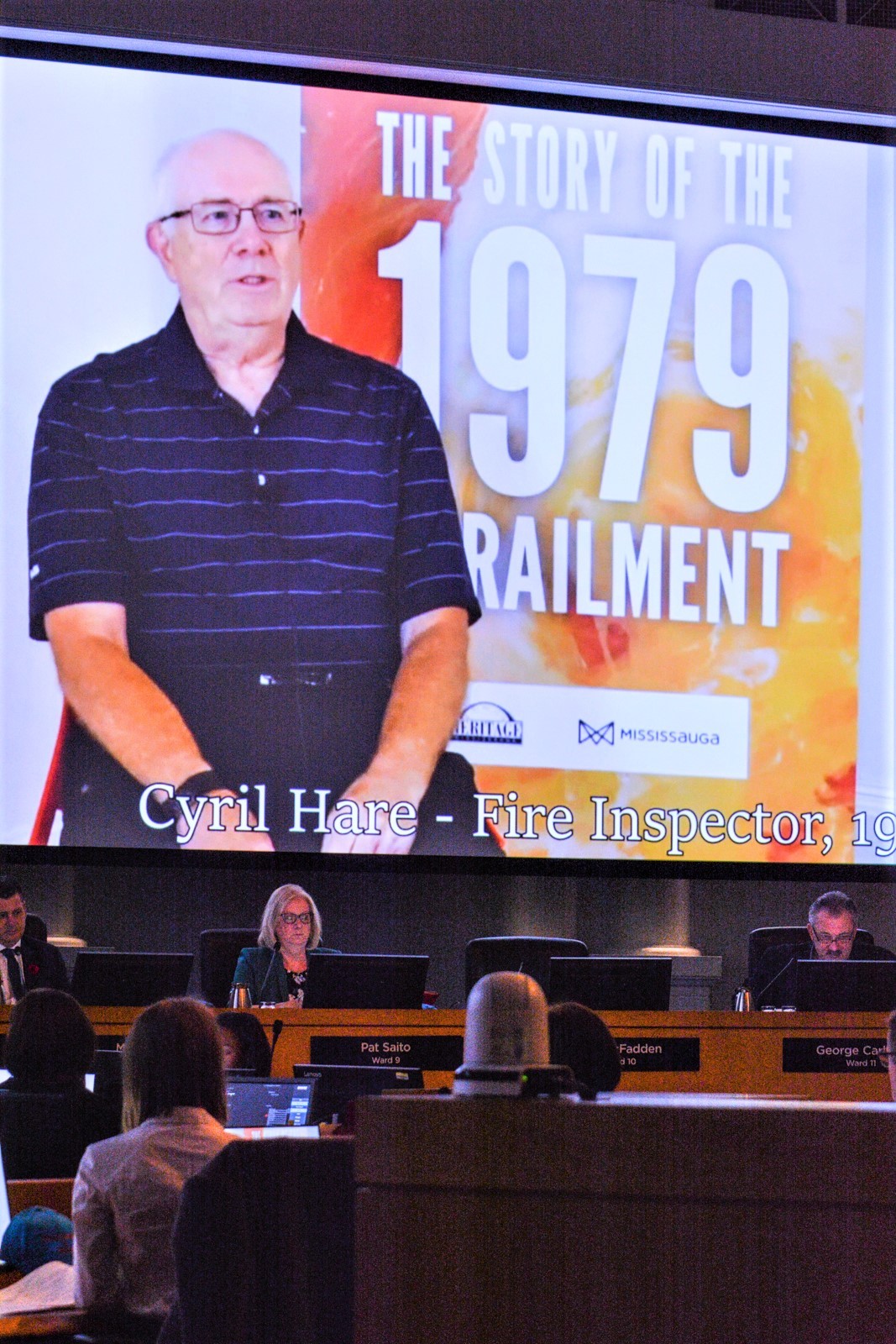
Councillors watch a video presentation this past Wednesday
All agreed that the response from those on scene or forced to flee, was heartening. Saito then pointed out the reason why it was called a “miracle.” The fact the train just passed through a major residential area before it derailed in a more industrialized part of the city, was a godsend, she said, and prevented what could have been a massive disaster.
They all had different pasts in the city, until the present united them. Mississauga had not, till then, embraced its identity, since incorporating five years earlier.
But tragedy, and near tragedy, has a way of bringing humanity together. After that day, Streetsville and Port Credit and Meadowvale and Cooksville, and the rest of the former villages and hamlets that had viewed themselves as independent islands, started to feel like something bigger. They were in it, together.
The message sent out that night is that cities are vulnerable. Luckily, no one in Mississauga would suffer any consequences. How close did Mississauga come from dodging a Pompeii? By a whisker, said Saito, who added, “It was a miracle of timing.”
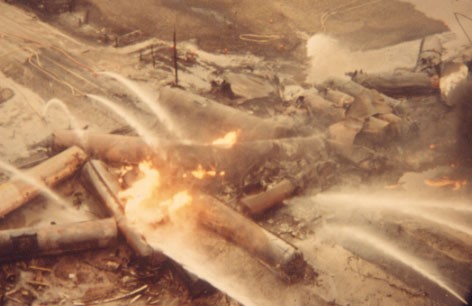
McCallion took advantage of that timing, in another way. Others, with political skin in the game, weren’t as lucky.
While some rise to meet a challenge, others fade to black. The prime minister at the time, Joe Clark, was struggling to find his footing in a minority government. Ontario Premier Bill Davis, a powerful voice in the PC hierarchy, advised him to get down to the scene of the incident. After all, it was a federal rail line. It was Joe Who’s chance to win some political capital.
Davis was right. The world was watching. Television crews from as far away as France were reporting from the site. But Clark was busy putting the finishing touches on legislation that would eventually lead to the defeat of his own government and the return of Pierre Trudeau. The opportunity to do something significant was wasted.
Into this void, stepped Hazel who? a virtual non-entity. She had slipped by her arch-rival Ron Searle to barely win the ’78 mayor’s vote.
Upon arrival at the scene, she immediately sent out a signal: I’m in charge.
Davis made sure his veteran attorney general, Roy McMurtry, was on the scene, too. He was a lawyer and didn’t know much about derailments, but neither did McCallion. After all, there were no manuals for this. But at the first press conference, the first-term mayor turned the tables on the media and asked her own question: Who’s going to pay for this clean-up?
She was quick to offer up her own answer: It damn well won’t be us.
For the first time, the world got to hear her now-famous preamble, “I can assure you…” which meant she was about to upbraid her political superiors. Her assurance was clear: not one cent of her taxpayers’ money would be used to pay for the clean-up. This is a federal government foul-up, she said. And where the hell is prime minister Clark?
McMurtry tried to get some air-time.
McCallion elbowed him away. She’d once moonlighted from her day job as an office manager to play pro hockey for $5 a game in Montreal. She was used to going into the corners.
The political ruling class had never seen such brashness, especially from a rep from this lowest level of government. McCallion said the feds better come up with a good explanation while this kind of toxic cocktail was being transported through a growing urban area. She pointed out that if the train had derailed a quarter-mile down the track, it could have killed thousands, cost hundreds of millions.
The citizens of her city were now scattered in dorm rooms, hotel rooms, and staying with relatives across the province. They were glued to their TV sets, watching every McCallion in-your-face moment.
“I can assure you…” caused CP officials to bow their heads.
The little mayor who could, became the face of the city, the second November miracle.
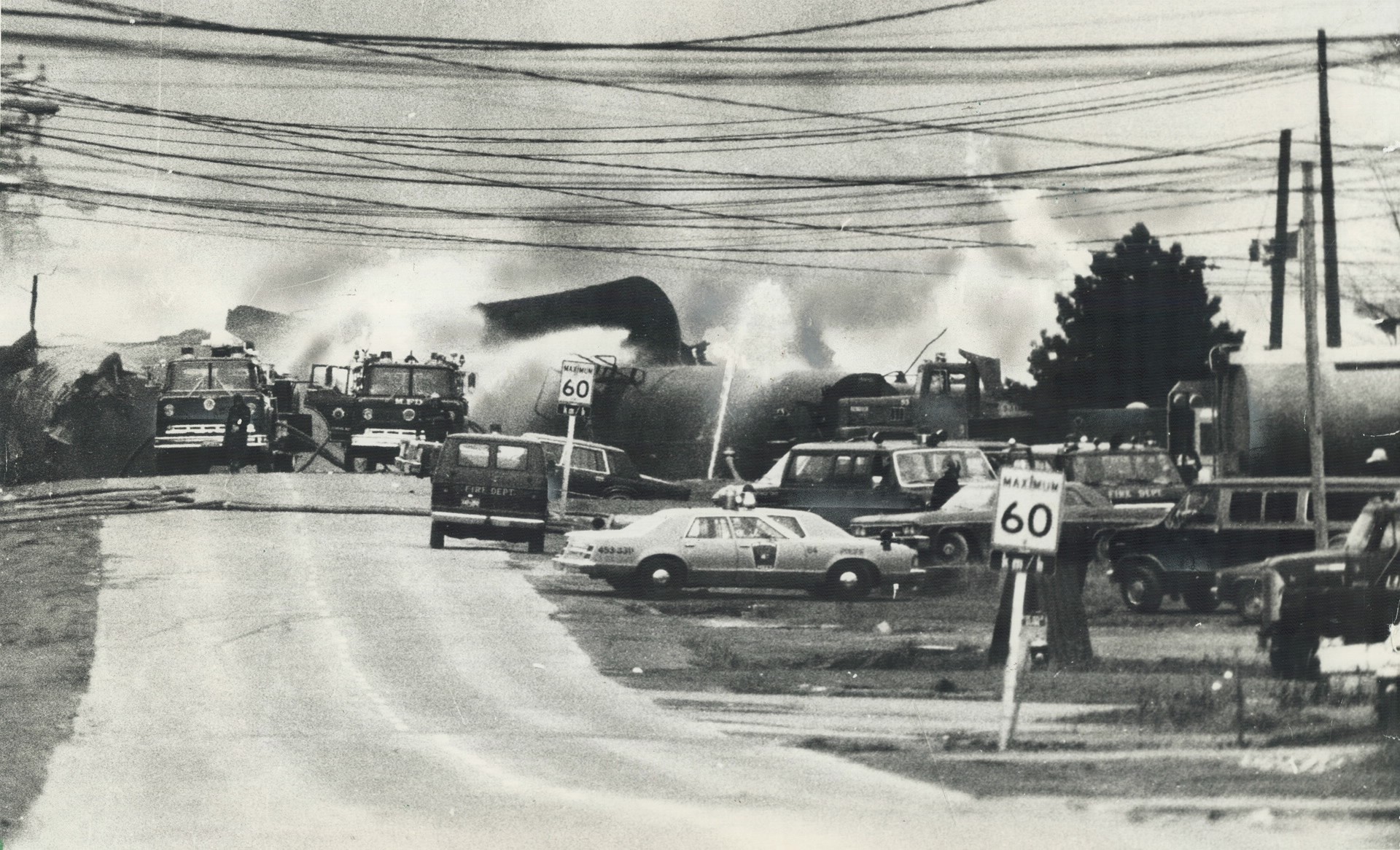
The video of the hospital being evacuated, the fire burning, and the streets emptied out, was indelibly imprinted into the public’s mind.
A lot of water has now passed under the Credit River bridge, located not far from the derailment site. Mississauga is one of the youngest and fastest growing cities in Canada. Most of its residents weren’t born in 1979, or were too young to remember the Miracle or were living elsewhere. It’s interesting to note that this miracle preceded by a year the ‘Miracle on Ice’ win by the U.S. men’s hockey team at the Winter Olympics.
This Sunday, those who missed out, can get an education in what exactly happened, how it impacted a city, and get to hear from those who were on site that day, or played a major part in the history of this city. They will get a little taste of the sights and sounds and emotions that made it such a riveting moment.
The irony, of course, is that the derailment put both McCallion and Mississauga on track to make even more headlines. She became the most popular and well-known mayor in Canada. The city has morphed into one of Ontario’s great economic engines, with a population that will soon push past 800,000 and way beyond. It is now in the middle of its third or fourth phase of development, which includes a dramatic reimagining of its downtown core, and its burgeoning waterfront.
Wednesday’s council was a time for reflection, and to offer up admiration to those first responders who did their job with grace.
Stirring political leadership, and lady luck also played their parts in helping write a happy ending.
Wednesday’s council meeting was a time for some serious back slapping.
So, yes, Sunday’s public event will be a celebration of a miraculous day: Nov. 10, 1979.
With 40 years now passed, it might be the last time the woman who made her name that day, returns to the spotlight to give her take on what actually happened.
I can assure you, it will be a must-attend event!
Submit a correction about this story


